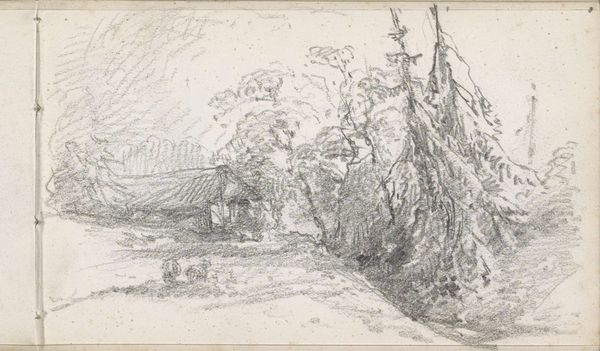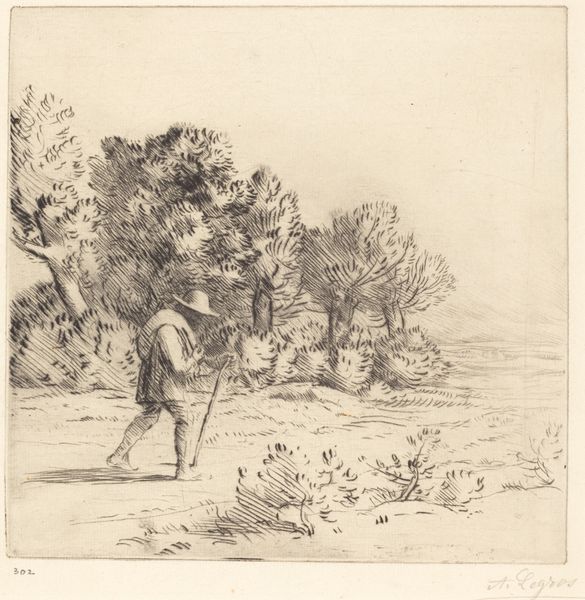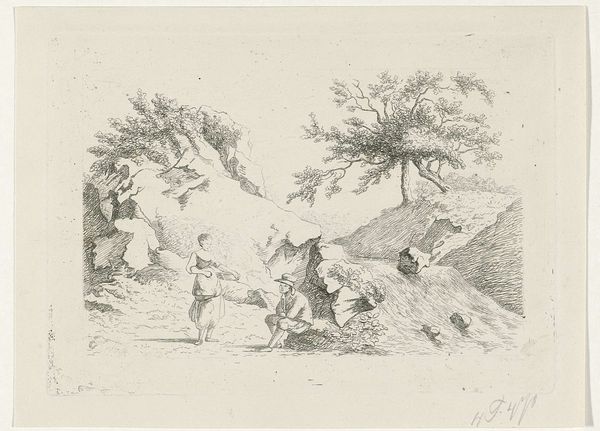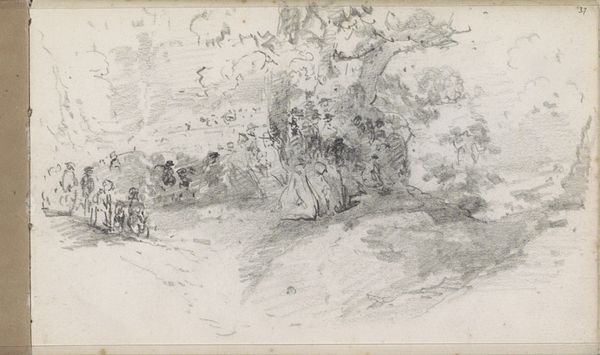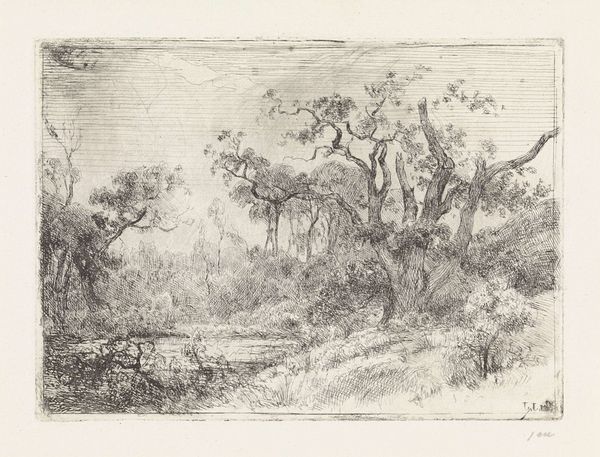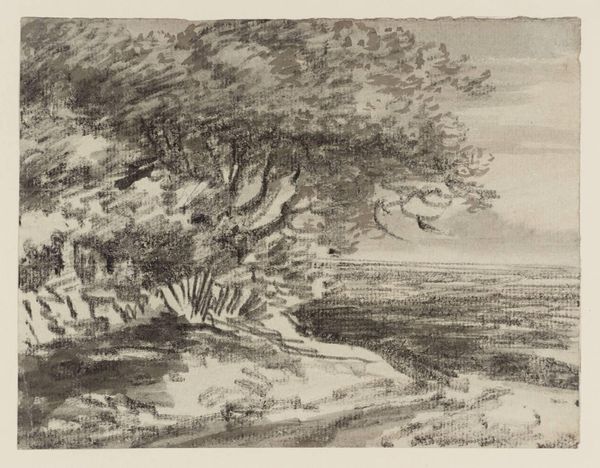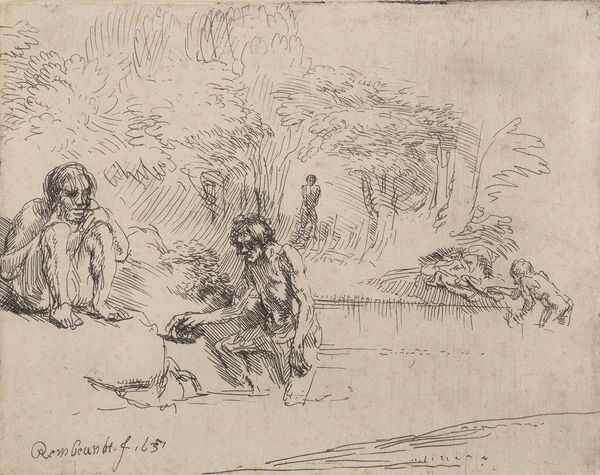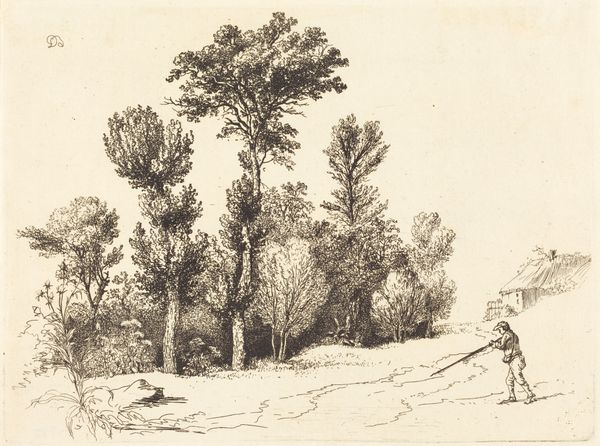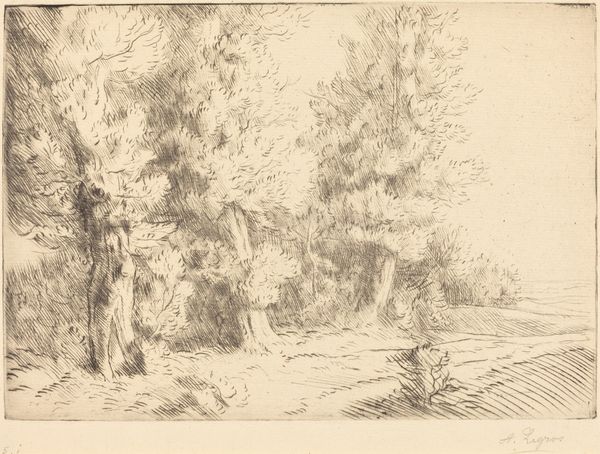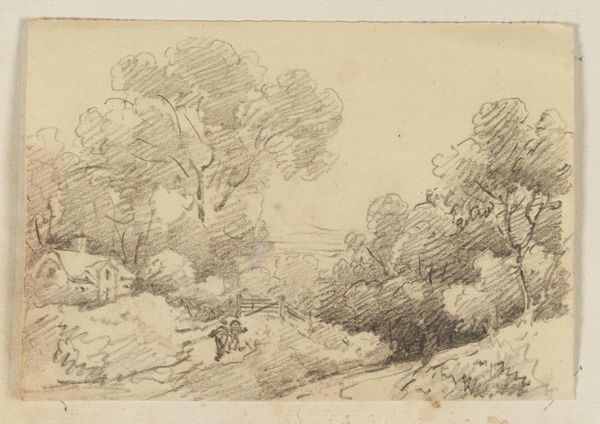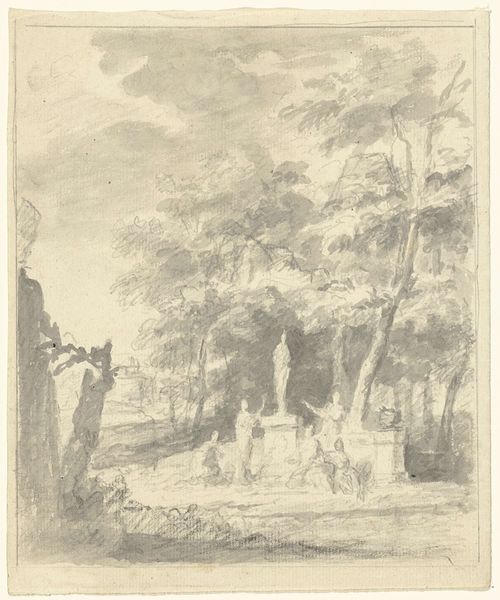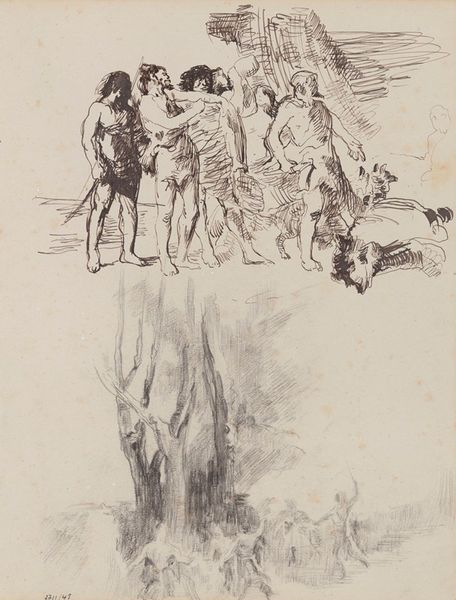
drawing, pencil, graphite
#
drawing
#
landscape
#
romanticism
#
pencil
#
graphite
Dimensions: 15.2 x 18.4 cm
Copyright: Public domain
Editor: Here we have what's called “Study of Willows”, a pencil and graphite drawing by Thomas Gainsborough currently held in the British Museum. It's really atmospheric; I am wondering, what can you tell me about the material choices here? Curator: Well, let's consider why Gainsborough might choose such humble materials – pencil and graphite – for a landscape study. Were these readily available? What was the economic landscape for artists like Gainsborough in procuring materials? His choice steers away from the perceived importance of oil paint, thus questioning those very established hierarchies of the time. What effect does the medium have on the overall texture? Editor: It does look less ‘finished’ than an oil painting, almost like a sketch, but that’s what gives it its charm. I see now, in comparison to the oil paintings Gainsborough was making for his money. What’s going on with those scribbly marks, though? Curator: Exactly. That scribbling hints at speed, efficiency and accessibility to the common observer. He seems to be drawing our attention to labor. What statement might he be making about labor as it pertains to drawing? Think about class. Editor: That makes me consider how landscape changed at the time! Now that land wasn’t solely about country estates. Maybe a raw sketch is all it should take. Curator: Precisely! So what have we learned here about our perception of materiality, artistic labor and socioeconomic classes from such "simple" drawings like "Study of Willows"? Editor: I realize that we may overlook something simple as "Study of Willows"; now, I am not so sure. Thank you for clarifying a different interpretation lens.
Comments
No comments
Be the first to comment and join the conversation on the ultimate creative platform.
